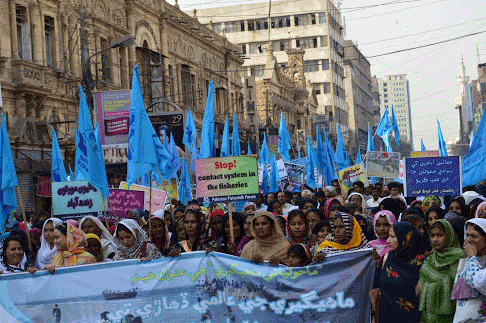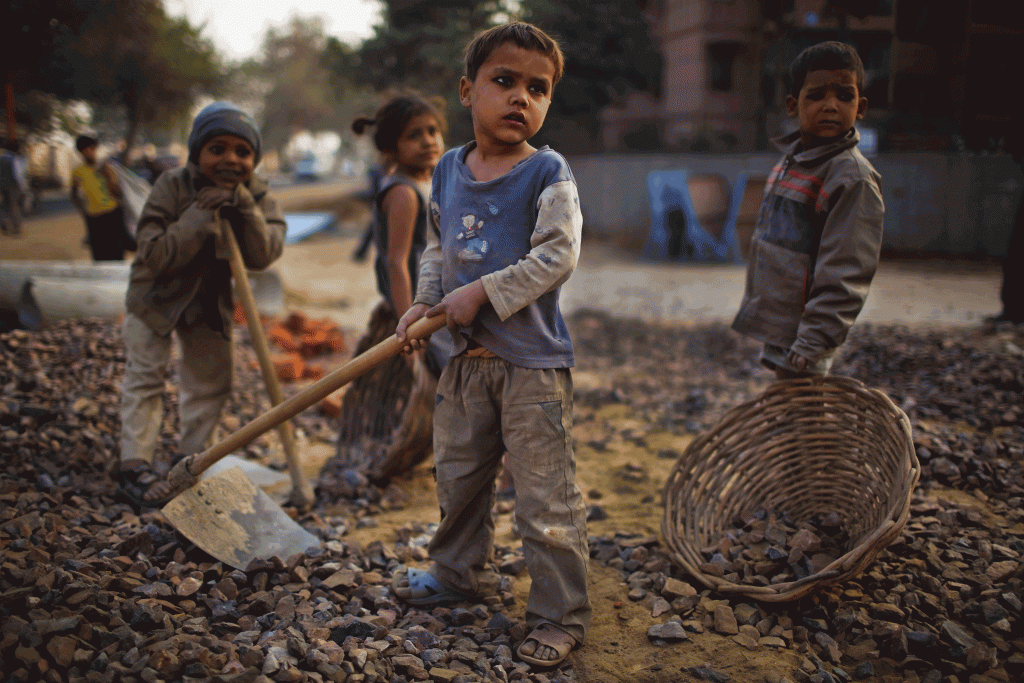Vulnerable, Exploited, Oppressed: Pakistan’s Labour Force
By Zubeida Mustafa | Special Report | Published 8 years ago
PILER is one of those rare not-for-profit organisations in this age of neoliberalism that continues to do research, collect information and create awareness on taboo labour issues. More than that, for 34 years PILER has championed the cause of the labour movement in Pakistan though the tragedy is there are few who now care about what is happening to our workers on whom depends the success of our economy and the well-being of the people.
PILER has published five reports on the ‘Status of Labour Rights in Pakistan.’ The 2015 report was released recently and would come as an eye-opener for those who read it. The earlier reports covered the years 2007, 2010, 2011 and 2014. They have all been translated into Urdu by Abdus Salam Salami, a development journalist.
All of these have been produced by editor/main author, Zeenat Hisam, who has deep insight into labour issues derived from her academic qualifications in Development Studies and her 13-year association with PILER. Lamenting the prevailing culture in Pakistan of non-documentation of information, the report complains about our indifference towards collecting data and sharing it with others. That made Zeenat Hisam’s work more daunting. She deserves credit for ploughing through whatever information she could lay her hands on to prepare this report on the 61.04 million men, women and children who comprise the workforce in this country.
If agricultural workers are excluded, nearly 72 per cent of our labour force are engaged in the informal sector. In other words it is impossible to get any authentic data about them, and as they are not organised they are the most vulnerable, exploited and oppressed of the lot.
This lack of information is criminal, especially if it is recalled that under ILO’s Statistics Convention No. 160, all countries are mandated to compile and publish basic labour statistics. Small wonder Pakistan has yet to ratify this instrument. Probably it never will. This is a country which cannot even be bothered to hold a census every 10 years, let aside probe into the working conditions of the 44 per cent of its people who comprise the much shunned workforce.
Inarguably, the workers who are the central subject of the PILER report are a vital segment of our population. In terms of numbers and their impact, they cannot be dismissed as being of no significance. According to calculations, a rural family (average size 6.8) is supported by the earnings of 1.5 of its members. In the urban areas where the informal sector dominates, there is no way to determine the dependency ratio and the state of those who are not even formally recognised as workers.
The author of the PILER report takes a broader view of the conditions of labour and how there are multidimensional factors that have a direct bearing on the well-being of all people generally and the workforce in particular. She looks at the security environment of the country (not too good), the state of the economy (not at all promising despite the slow-down in the inflation rate), the favourable international agreements signed such as the GSP+ with EU that exempts Pakistan’s exports from tariff (which cannot be implemented due to the government’s failure to meet the conditions on compliance), the legislation adopted by our assemblies to regulate working conditions (in the absence of political will, even ratified ILO conventions are not being implemented), and the quality of the human resources on which productivity depends (dismal).
Just have a look at the education and health systems in Pakistan, especially in the public sector institutions where the workers’ children go. The report points out that, “GDP allocation for education remained stagnant at 2.1 per cent while health received the abysmally low allocation of 0.42 per cent of the GDP. This contradicted the government’s much vaunted Vision 2025 and its aim of putting people first.”
The PILER report should shock people out of their complacency. The literacy rate has remained stagnant at 58 per cent for several years, the gender disparity in education (female literacy stands at 47 per cent, while male literacy is 70 per cent) continues to be horrific and 6.7 million children are still out of school. The report correctly identifies the key problems in education as being lack of access, poor quality and inequity.
Similarly the appalling health indicators have profound implications for productivity. They contribute to the failure in education as a sick and undernourished child does not have the energy and the stamina to study satisfactorily. Ill health in labour leads to lower productivity as DALY (Disability Adjusted Life Year) increases, indicating the burden of disease.
Pakistan is at the bottom of the rung in the region. A maternal mortality rate of 170 per 100,000 and an infant mortality rate of 69 per 1,000 do not speak highly of the healthcare a person begins life with.
The PILER report very clearly points to the direct impact of some labour-related issues on the status of labour in Pakistan. It also elucidates how their impact is intensified because of inefficiency, corruption and the absence of accountability in the various relevant departments. To name a few,
- Paucity of data and reluctance of the authorities to share the information they have with the citizens — the Labour Force Survey compiled by the Bureau of Statistics is now the only source of dwindling statistics about the workers.
- There are the malpractices in the announcement and implementation of minimum wages — said to be Rs. 13,000 per month today — which go against the interest of the workers.
- Failure to enforce occupational safety standards and lack of inspection with the number of accidents not being reported.
- The burgeoning informal sector leaves so many beyond the pale as their status cannot be documented.
- Pakistan stands at the bottom of the list of countries with the worst conditions for workers. “Fundamental rights of workers, namely the right to bargain collectively, the right to strike, the right to associate freely and access to due legal process are in practice non-existent,” the report informs us.
- There is no count and recognition of child labour while the bulk of women workers are marginalised by making them invisible. Their unpaid labour such as domestic work or contribution to family earnings is not recognised at all.
Yet workers in Pakistan have continued to struggle through whatever avenues are available to them such as going to court, joining hands with other organisations and drawing the attention of policymakers by going to the media or holding protest rallies.
The report makes a number of recommendations that include
- Rationalisation of the strength of inspectors to make them effective.
- Requiring factories employing more than 200 workers to employ Health and Safety Officers.
- Devising mechanisms to ensure medical check-ups at workplace.
- Devising mechanisms to report accidents.
- Coordinating mechanisms to improve liaison between inspectors and magistrates .
- Updating labour laws.
- Creating facilities for training inspectors.
- Computerising inspection.
- Inspection must be the state’s responsibility but some tasks are about to be outsourced to the private sector to improve the quality of inspection.
- Inspection should be made gender-sensitive.
- The level of inspection and other facilities should be standardised in all provinces.
The PILER report is a startling indicator of the state of labour in Pakistan. Hisam is optimistic about the positive outcomes of the resistance offered by labour worldwide. She deduces, from her observations, that the future of labour in Pakistan is not so bleak either. According to her, the labour movement is reinventing itself and has gained new social partners. (“Modern Labour,” Dawn, 1 May 2016 http://www.dawn.com/news/1255511/modern-labour).
But there are some ground realities that must be taken note of in Pakistan’s context. For instance, without education, Pakistan can never hope to have a vigorous labour movement. In other countries where labour made so many gains in its demand for shorter working hours and better working conditions, it also improved its education and technical skills to make itself indispensable.
That has not happened in Pakistan where the state, in collusion with the employers and industrialists in the urban areas and the big landowners in the rural areas, ensured the destruction of education for the common man. The private sector has been allowed to fill the vacuum for the privileged classes. The information on the education sector contained in the PILER report doesn’t tell the full story. The state of the education sector in Pakistan is so abysmal that even the children enrolled in schools are not learning much.
With the growing trend towards specialisation, digitisation and automation of the economy, untrained and unskilled labour, as ours is preponderantly, is redundant. The rapidly growing population ensures the availability of unskilled labour, which is desperately looking for work and is willing to break pickets even if workers go on strike. The immense stratification of society and the growing gap between the ‘knows’ and the ‘know-nots’ makes a handful of technically trained people sufficient to fill the needs of the employers.
This makes unskilled labour of very little use in a modern knowledge-based economy. Unfortunately, this aspect of labour in Pakistan is not being taken note of. When education is so badly neglected, can we really hope for labour’s need for knowledge, skill and training to be met?
Zubeida Mustafa is a senior journalist. She writes on a variety of subjects but her interest has mainly been in the social sector which she has covered extensively. She has investigated in-depth issues such as education, health care, women’s empowerment, children’s rights and the lives of ordinary people.





